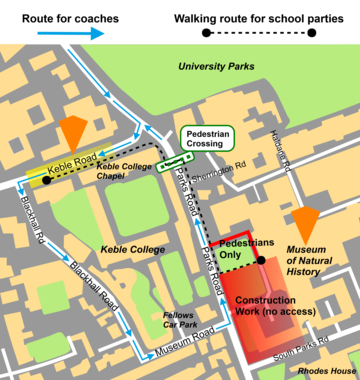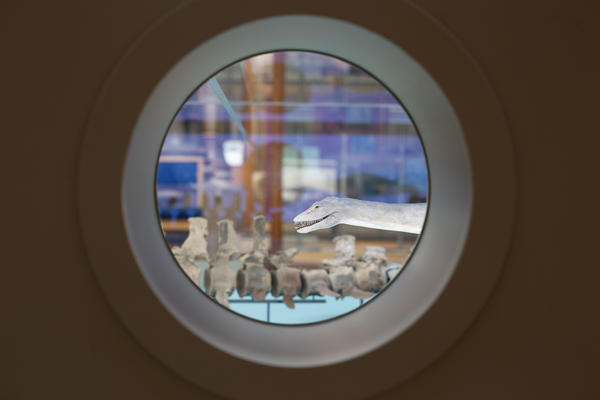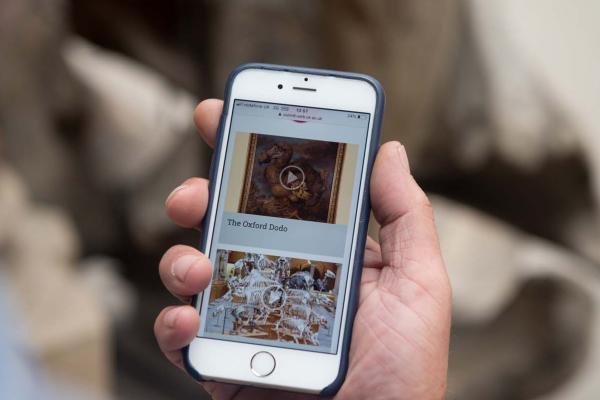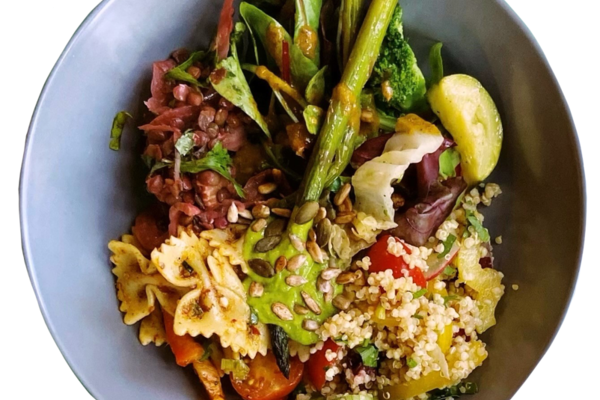Oxford University Museum of Natural History is located in the centre of Oxford on Parks Road, OX1 3PW. It is a five-minute walk from the Bodleian Libraries and in the same building as the Pitt Rivers Museum. The Museum encourages visitors to make use of Oxford's excellent green travel provisions, including Park and Ride services and cycle routes. For more information, see below.
Bus
There are regular buses from Oxford station that stop within walking distance of the Museum. From Bus Stop R4 at the train station, take the 500, 14 or 14A. Alight after eight stops at the Keble Road bus stop. For further information on buses please refer to bus company websites, Oxford Bus and Stagecoach. Both companies offer day tickets which can provide a cost-effective way to travel around Oxfordshire.
Bicycle
There are cycling lanes on Parks Road and throughout Oxford, allowing you access to the Museum by bicycle. Please use bike racks available on Parks Road or outside the Robert Hooke building (on the right side of the Museum, as viewed from Parks Road).
Train
The Museum is a 20-minute walk from Oxford train station (Oxford Parkway station is further from the city centre). Directions for walking from the train station:
- Take the pedestrian crossing and walk up Beaumont Street. You will see the Ashmolean Museum on your left and the Randolph Hotel on your right.
- Once you get to the end of Beaumont Street, you will see a junction and a series of pedestrian crossings. First, cross the road so that you are on the same side as the Randolph Hotel, then take the pedestrian crossing to your left – towards the Martyr’s Memorial. Cross over the bus lane, so that you are back on the pavement.
- Walk up this street, with the Ashmolean across the road on your left, until you come to an archway alongside the Lamb & Flag pub. Enter the archway and walk along the narrow passageway past the tree. This will open out into a larger street, which you should follow until you see a pedestrian crossing at the end of the road.
- Cross the road and you will immediately see a large Gothic building with large oak doors; this is the Museum. Enter through the front doors.
Park and Ride
Oxford is well served by a number of Park and Ride services from different parts of outer Oxford, with City Centre stops within walking distance of the Museum. There are five Park and Ride car parks (on the A40 at Headington; Redbridge, Abingdon Road, near Kennington; Pear Tree Roundabout, Woodstock Road; Oxford Parkway, Banbury Road, Kidlington; and Seacourt at Botley).
Coaches

Before your visit to the Oxford University Museum of Natural History, please read this information and share it with your coach driver:
Please do not stop on Parks Road for school drop-offs and pick-ups.
Due to extensive construction work taking place on Parks Road (the road on which the Museum is located) you must not stop, drop off or pick up your school party on this road. The increase in large construction vehicles outside of the Museum, along with the road works and alterations to the cycle lane, makes it very dangerous for coaches to stop on Parks Road.
Please use Keble Road for school drop-offs and pick-ups.
We have identified Keble Road as the safest place for coaches to drop off and pick up school parties. This is just to stop for a brief amount of time. It is best to approach Keble Road from North Oxford, travelling through Summertown and the Banbury Road. After dropping off/picking up your school party, you can exit Keble Road by making a loop round to the left, turning down Blackhall Road then Museum Road. Please see the map below for the route to take. The map also shows the walking route for school parties, including where to cross at the pedestrian crossing to reach the Museum.
Car
There is no parking at the Museum (except limited blue-badge parking), so we recommend you use public transport or a Park and Ride.
Parking is available in Oxford at the Westgate Shopping Centre.
There is also pay and display parking close to the Museum on Mansfield Road, Keble Road and Blackhall Road.
There are charging points for electric vehicles located on Keble Road and Bevington Road. Please see this map for more details on charging your electric vehicle.











